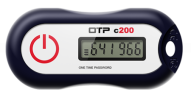britechguy
Well-Known Member
- Reaction score
- 5,061
- Location
- Staunton, VA
This morning I needed to walk one of the employees at the business where I set them up with M365 business through getting an authenticator app set up, since Microsoft is now demanding multifactor authentication.
I now favor 2FAS over Microsoft Authenticator, so I had her use that, as I do. But while walking her through the process on her phone I did the same thing on my own, and with her email address that's part of the MS tenant, and it allowed me to do that. We were both generating the same TOTP at the same time, and I would have thought there would be some dependence on the device doing the generating, but it appears not.
In thinking about it, since they are time-based, and temporary, I guess if you set up the same account in 2 different devices virtually simultaneously it makes sense that whatever is used to initially configure the code would be the same. I was using the same QR code, as we were screen sharing at the time, so that could play into it, too. My "copy" is now gone from my 2FAS instance.
I now favor 2FAS over Microsoft Authenticator, so I had her use that, as I do. But while walking her through the process on her phone I did the same thing on my own, and with her email address that's part of the MS tenant, and it allowed me to do that. We were both generating the same TOTP at the same time, and I would have thought there would be some dependence on the device doing the generating, but it appears not.
In thinking about it, since they are time-based, and temporary, I guess if you set up the same account in 2 different devices virtually simultaneously it makes sense that whatever is used to initially configure the code would be the same. I was using the same QR code, as we were screen sharing at the time, so that could play into it, too. My "copy" is now gone from my 2FAS instance.

